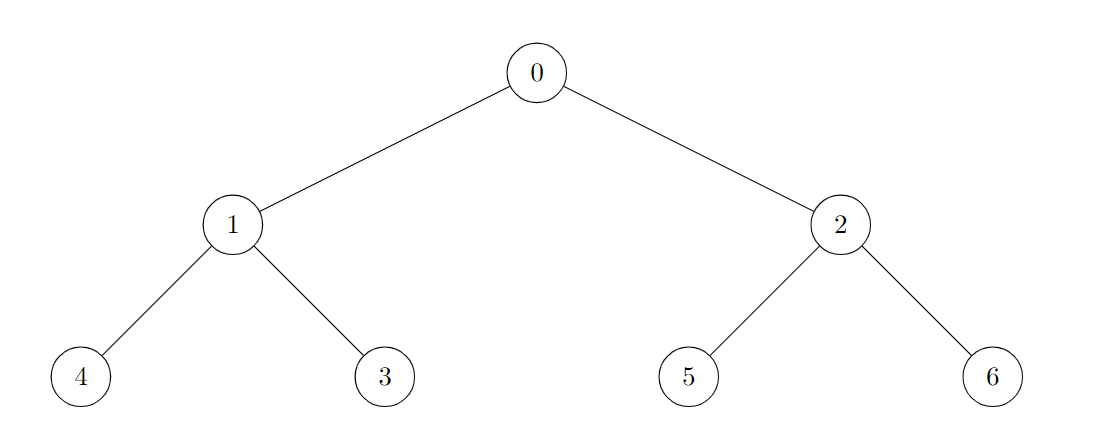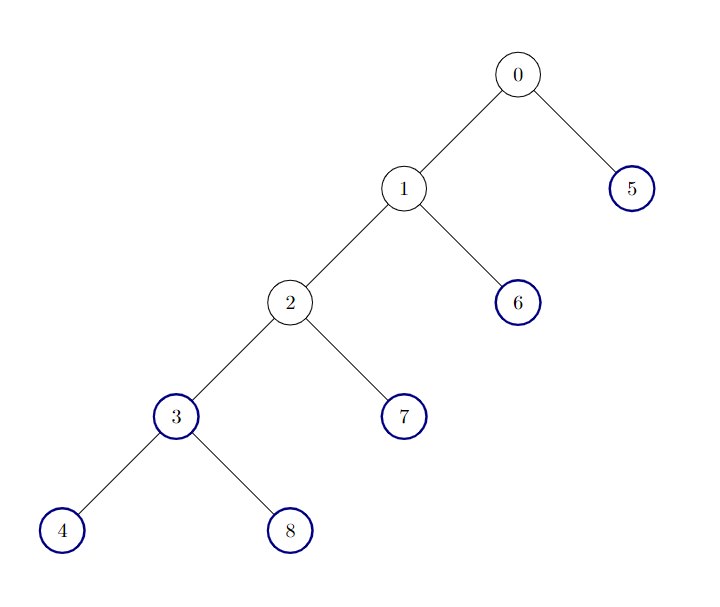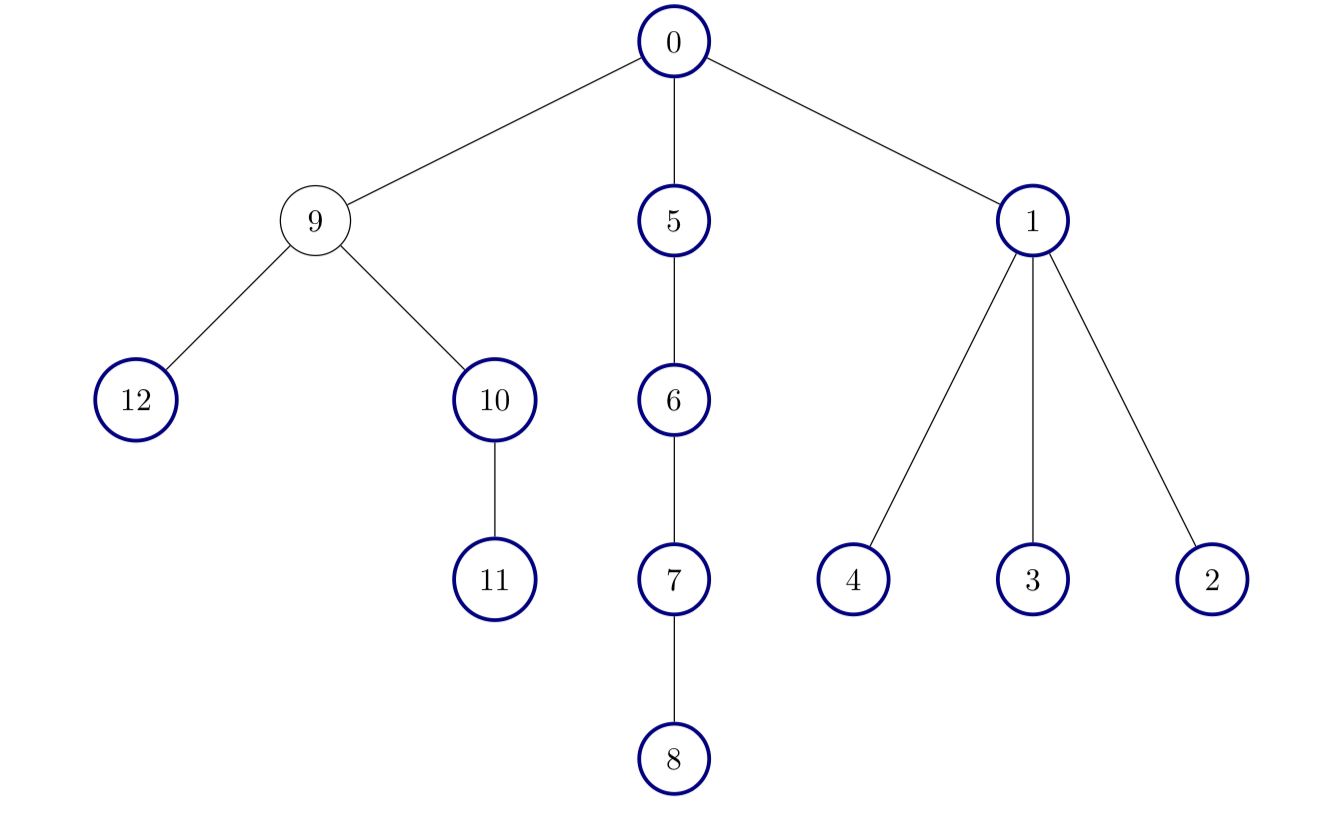Description
There is an undirected tree with n nodes labeled from 0 to n - 1, and rooted at node 0. You are given a 2D integer array edges of length n - 1, where edges[i] = [ai, bi] indicates that there is an edge between nodes ai and bi in the tree.
A node is good if all the subtrees rooted at its children have the same size.
Return the number of good nodes in the given tree.
A subtree of treeName is a tree consisting of a node in treeName and all of its descendants.
Example 1:
Input: edges = [[0,1],[0,2],[1,3],[1,4],[2,5],[2,6]]
Output: 7
Explanation:

All of the nodes of the given tree are good.
Example 2:
Input: edges = [[0,1],[1,2],[2,3],[3,4],[0,5],[1,6],[2,7],[3,8]]
Output: 6
Explanation:

There are 6 good nodes in the given tree. They are colored in the image above.
Example 3:
Input: edges = [[0,1],[1,2],[1,3],[1,4],[0,5],[5,6],[6,7],[7,8],[0,9],[9,10],[9,12],[10,11]]
Output: 12
Explanation:

All nodes except node 9 are good.
Constraints:
2 <= n <= 105edges.length == n - 1edges[i].length == 20 <= ai, bi < n- The input is generated such that
edgesrepresents a valid tree.
Solution
Python3
class Solution:
def countGoodNodes(self, edges: List[List[int]]) -> int:
N = len(edges) + 1
graph = defaultdict(list)
res = 0
sz = [0] * N
for x, y in edges:
graph[x].append(y)
graph[y].append(x)
def go(node, prev):
count = 1
for adj in graph[node]:
if adj != prev:
count += go(adj, node)
sz[node] = count
return count
go(0, -1)
for node in range(N):
ok = True
prev = -1
for adj in graph[node]:
if sz[adj] < sz[node]:
if prev == -1:
prev = sz[adj]
elif prev != sz[adj]:
ok = False
break
if ok: res += 1
return res